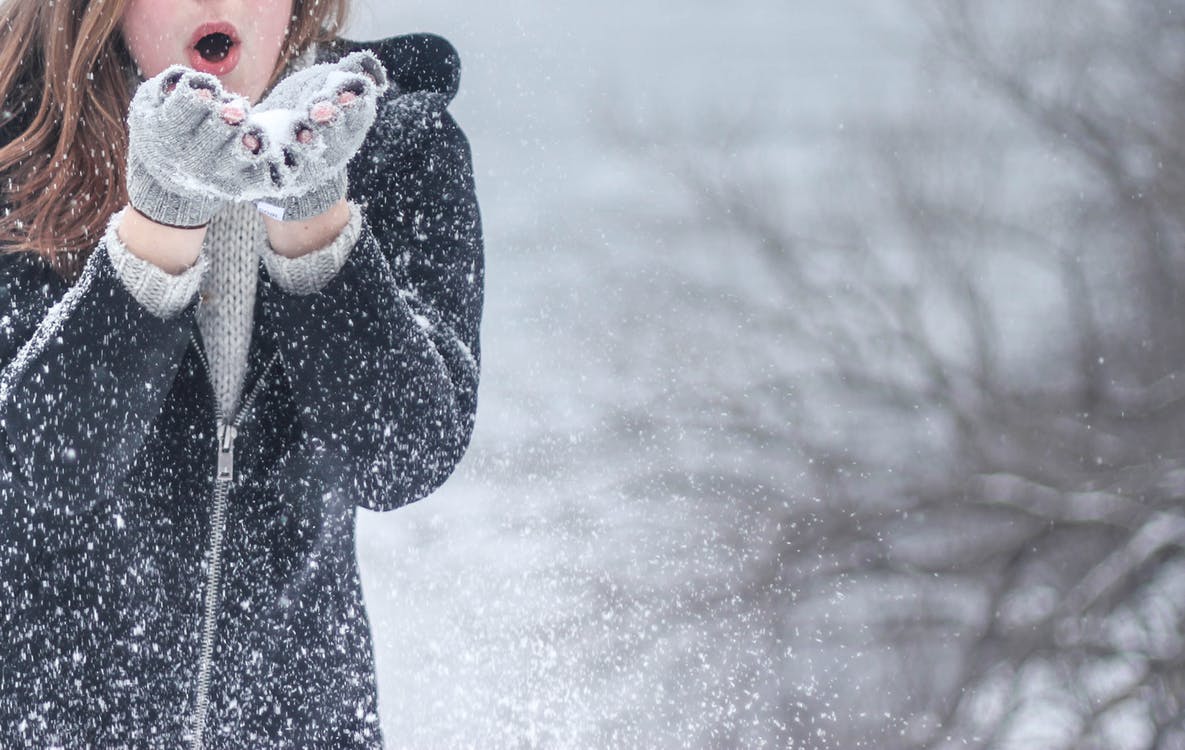Animals instinctively know how to survive a brutal winter. Not so with humans; they must be taught. Ask anyone who has relocated from a mild climate to one with harsh winters. With climate change bringing extreme weather everywhere, southerners may need a new bag of tricks, too. Take care of your home, family, and vehicles with this winter survival guide.
How To Winterize Your Home
A home is your first defense against the cold. Take steps early to winterize yours.
1. Have your heating system inspected before the first cold day hits. Using a garden hose, spray your HVAC unit to remove debris.
2. Clean or replace furnace intake filters. If you use your fireplace often, have the chimney inspected and cleaned of creosote buildup.
3. Make sure carbon monoxide and smoke detectors are working.
4. Adding an extra layer of insulation in the attic will make the house warmer and prevent roof-damaging ice dams from forming.
5. Install weather stripping around exterior doors. Chaulking around windows will prevent drafts and heat loss.
6. Insulate exposed water pipes in unheated areas like basements and crawl spaces.
7. Don’t forget the outdoors. Clean gutters in the fall before winter so melting snow can drain. Have trees trimmed and dead branches removed so that winter storms won’t make them fall on the house or people.
Surviving a Winter Storm
Winter storms often mean prolonged power outages. You’ll need a winter emergency kit and equipment. After preparing for the basics, have the following items on hand.
1. Warm blankets and winter clothing for layering.
2. An alternative heating source like a kerosene or propane space heater and extra fuel.
3. Deicing salt, sand, (kitty litter works), a sturdy shovel, and a good snow blower.
4. Extra medications
5. At least a three-day supply of nonperishable food and a gallon of water per day, per person. Fill the bathtub with water for flushing the toilet.
6. Flashlights, batteries, battery-operated radio, fire extinguisher.
7. Books and board games.
8. First aid kit.
9. If applicable, extra pet food and baby supplies.
10. Extra cash in case ATMs aren’t working
11. Consider having a hydraulic hose available as well
During the storm, be sure to listen to weather reports and instructions on local radio, or TV stations, or on a NOAA weather radio if the power is out. Wear several layers of clothing if you must go outdoors. Wool or polypropylene inner layers hold in heat better than cotton. Wear a hat and face mask to keep in body heat. Mittens work better than gloves. Keep in mind that hypothermia begins rapidly in the extremities (fingers and toes).
Winterizing Your Vehicles
Make sure your car has a good battery and enough antifreeze before the winter weather hits. Invest in a good set of snow tires. Keep at least a half tank of gas in it. Have supplies in your car should you become stranded on the highway. Include blankets, drinking water, nonperishable food items, a flashlight, and a NOAA radio. New to driving on ice? Here are some tips:
1. Have comprehensive auto insurance
2. Accelerate gradually
3. Don’t brake during turns
4. Keep headlights on
5. If you skid, turn into the skid. Never slam on the brakes.
Author Bio: Paige Jirsa
I work with Top10.Today, a shopping comparison site, where we strive to help consumers find the best quality and priced products.

